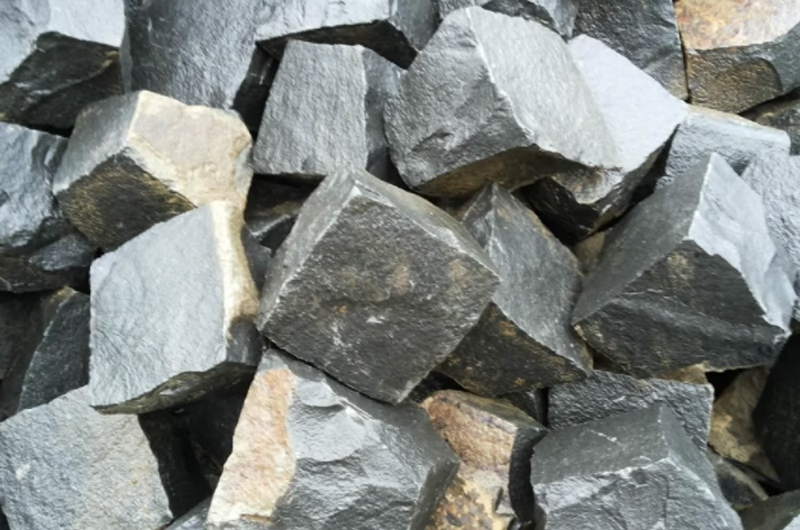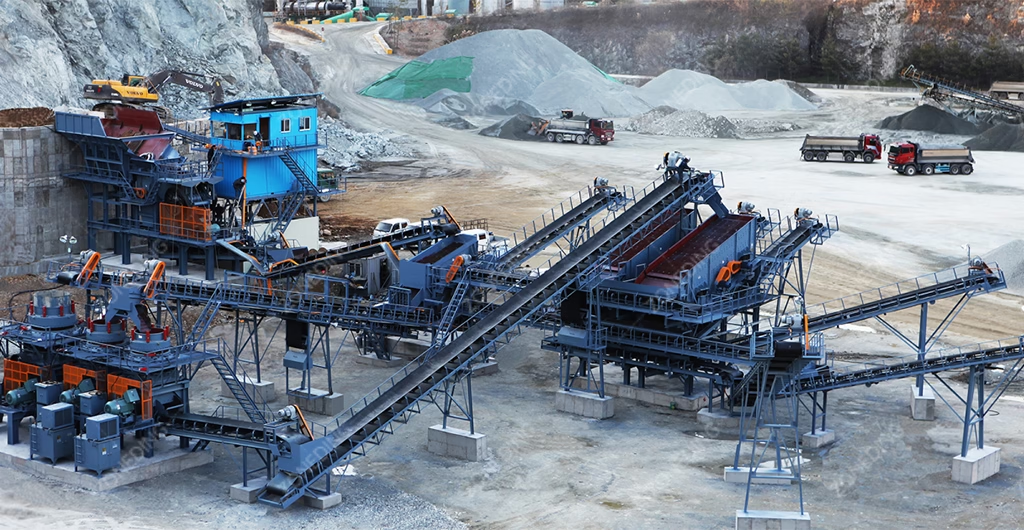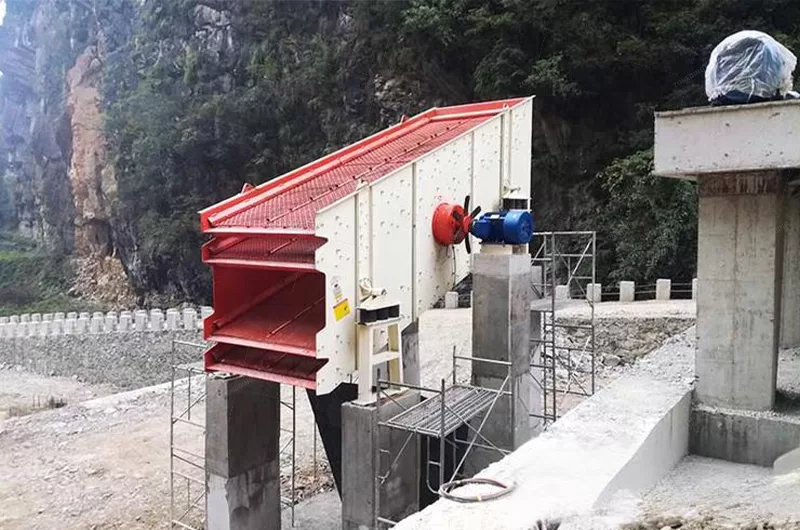全站搜索
Search the entire website
Search the entire website
Basalt processing presents unique challenges due to the inherent properties of this pervasive rock. Effective strategies transform raw basalt into valuable aggregates for construction and infrastructure projects. This guide highlights 9 critical considerations essential for maximizing operational efficiency, ensuring quality output, and securing profitability in any quarry operation. ZONEDING MACHINE possesses extensive experience providing the right crushing equipment for basalt. This expertise helps navigate these considerations and achieve successful aggregate production. This article covers everything from material handling to safety protocols and quality control.
Basalt is an igneous rock. It forms from rapidly cooling lava. It appears worldwide. Its dark color and fine grains characterize it. Understanding basalt’s unique properties starts effective basalt processing. This dense and hard rock demands specific quarry machinery and processing strategies. Ignoring these traits leads to frequent equipment breakdowns, high wear rates, and reduced productivity.


Basalt typically exhibits high compressive strength and is very abrasive. This makes it tough to crush and causes significant wear on crushing equipment. Its uniform texture, however, produces good cubical products when crushed correctly. This makes it a preferred material for high-strength concrete and road construction. ZONEDING designs crushing equipment to withstand these demanding conditions. Machines from ZONEDING incorporate high-quality, wear-resistant materials. These materials ensure maximum uptime for any aggregate production.
| Basalt Property | Processing Implication | ZONEDING Solution |
|---|---|---|
| High Hardness | Requires robust primary reduction | Heavy-duty PE/JC series jaw crushers |
| High Abrasiveness | Leads to high wear on parts | Machines utilize high-manganese steel/chrome liners |
| High Density | Implies heavy loads on conveyors/screens | Reinforced structures, specialized belt conveyors |
| Cubical Product | Achievable with optimal methods | Cone crushers and VSI impact crushers |
A thorough pre-processing site assessment proves crucial before any basalt processing begins. This assessment determines the quantity and quality of basalt reserves. It also influences the quarry operation layout and material handling logistics. Skipping this step risks encountering unexpected geological faults or lower-quality basalt. This significantly impacts the project’s overall economics.

The assessment extends beyond geology to consider site access, environmental factors, and local infrastructure. These play a large role in establishing aggregate production. ZONEDING assists with initial site consultations. The company helps ensure complete production line designs integrate perfectly with specific site conditions. This minimizes future operational problems.
The primary crushing stage often creates a bottleneck for most basalt processing plants. It establishes the throughput capacity of the entire aggregate production line. Basalt’s hard and abrasive nature means selecting the right primary crushing equipment is not just an option—it proves a critical necessity. An underpowered or unsuitable crusher leads to constant breakdowns and high maintenance costs. This significantly impacts overall quarry operations.

Primary crushers need to handle large, often irregularly shaped, feed material directly from the quarry face. They must withstand extreme forces and process material consistently. ZONEDING’s heavy-duty jaw crushers engineer specifically for basalt processing. They deliver reliable performance under the most arduous conditions. This ensures an efficient start to any basalt processing journey.
After primary crushing, basalt material requires further reduction for specific aggregate sizes and product shapes. This stage proves critical for meeting market demands and impacts the overall perceived quality of aggregate production. Poorly shaped aggregates have lower market value and perform weakly in concrete.

High-quality basalt aggregates typically require cubical shapes. This minimizes voids in concrete and improves stability in asphalt. ZONEDING’s cone-crushers and Vertical Shaft Impact Crushers specifically design for this purpose. They produce superior product quality, maintain high throughput, and ensure basalt aggregates meet the most stringent construction standards.
Accurate screening and sizing are fundamental to successful basalt processing. They directly influence the quality and marketability of aggregates. Properly sorted basalt aggregates meet specific construction standards for road base, asphalt, and concrete mixes. Inaccurate screening leads to mixed-size batches, which reduces product value and can even cause customer rejection.


Efficient screening equipment ensures correct sizing for each basalt particle. This separation process not only produces saleable products but also optimizes the feed to subsequent crushing equipment. This prevents unnecessary over-crushing and minimizes wear and energy consumption. ZONEDING’s vibrating screens are robust. They design for the high density and abrasiveness of basalt. They provide precise separation and maintain high throughput in demanding quarry operations.
The movement of basalt through a processing plant is constant, from primary crushing to final stockpiles. Efficient material handling and conveyance systems are absolutely vital. They minimize operational costs and maximize throughput. Poorly designed systems lead to bottlenecks, spillage, and frequent breakdowns. These issues reduce the efficiency of the entire basalt processing operation.

Heavy-duty belt conveyors form the backbone of most modern aggregate production plants. They provide continuous, low-cost transport. For basalt, these systems must be robust to handle the material’s high density and abrasiveness. This ensures reliable movement. ZONEDING supplies durable conveyor systems. Custom designs integrate these systems seamlessly with any complete production line. This guarantees smooth material flow.
Due to its abrasive nature, basalt processing causes significant wear on quarry machinery components. Managing wear parts effectively stands as one of the most critical considerations. It directly impacts operating costs and uptime. High-quality wear parts reduce replacement frequency and extend maintenance intervals. This leads to substantial savings. Ignoring this can result in catastrophic failures, lengthy downtimes, and reduced profitability.
ZONEDING understands the demands of basalt processing. The company uses high-quality, wear-resistant alloys in its crusher liners, screen meshes, and other consumable parts. ZONEDING also provides comprehensive advice on wear part selection and management. This helps reduce costs and ensures continuous aggregate production. Trust in genuine ZONEDING wear parts. They design for durability and performance.
Basalt processing operations, like any heavy industry, must adhere to strict environmental regulations and safety protocols. This represents not just a legal requirement but an ethical responsibility. It protects workers and the surrounding environment. Non-compliance can lead to severe fines, operational shutdowns, and damage to a company’s reputation. A proactive approach to environmental and safety management proves essential for long-term viability.
Implementing effective dust suppression, noise control, and water management procedures becomes vital. This creates a safer working environment and minimizes ecological impact. ZONEDING’s mineral processing equipment integrates with various environmental control systems. Designs prioritize safety. This helps build a responsible and sustainable quarry operation.
The ultimate goal of any basalt processing venture is profitability. This requires thorough and ongoing cost analysis. Operators must understand both capital expenditures (CAPEX) and operating expenditures (OPEX). Every decision, from choosing quarry machinery to managing wear parts, impacts the bottom line. Without clear financial oversight, even a high-volume aggregate production can struggle.
Careful cost management and efficiency optimization maximize profitability. This includes minimizing energy consumption, reducing downtime, and producing high-quality, high-value aggregates. ZONEDING helps clients develop comprehensive cost structures. The company ensures its efficient complete production line solutions contribute positively to financial success.
ZONEDING stands as a leading Chinese manufacturer of heavy mineral processing equipment. The company focuses on B2B solutions for mining, aggregate, and cement industries worldwide. Since its establishment in 2004, ZONEDING built a reputation for designing and delivering robust, efficient, and customizable crushing equipment. This applies directly to basalt processing needs.

Key advantages of partnering with ZONEDING include:
Ready to optimize your basalt processing operations? Contact ZONEDING today for expert advice and a customized equipment solution!
Effective basalt processing represents a complex but rewarding endeavor. It demands careful planning, robust quarry machinery, and meticulous operational management. From understanding basalt’s unique, abrasive properties to implementing efficient crushing, screening, and material handling systems, each consideration plays a vital role. Prioritizing wear parts management, ensuring environmental compliance, and maintaining a sharp focus on cost analysis also prove essential for long-term profitability in aggregate production ventures.
By systematically addressing these 9 critical considerations, operators can build a basalt processing plant that is highly efficient, sustainable, and capable of consistently producing high-quality aggregates. The right partner, with proven expertise and reliable mineral processing equipment, makes all the difference.
Choosing the right rock crusher is the single most important decision for your quarry, mining, or recycling operation. It's the engine of your business. The right choice maximizes your output and profit, while the wrong one leads to constant head...
View detailsUnderstanding different gold ore types is fundamental for successful mining. The geology of a gold deposit directly dictates how to mine it and how to extract the gold. This knowledge influences every decision, from initial exploration to final r...
View detailsHigh moisture content in your final sand or mineral product is a hidden profit killer. It means you're paying to transport water, your material may not meet quality specifications, and it can be difficult to handle and stockpile. A high-efficienc...
View detailsApatite is a vital mineral. It serves as the primary source for phosphorus. Phosphorus is essential for many industries, especially agriculture. Effective apatite processing ensures recovery of this critical element efficiently. This guide explor...
View details